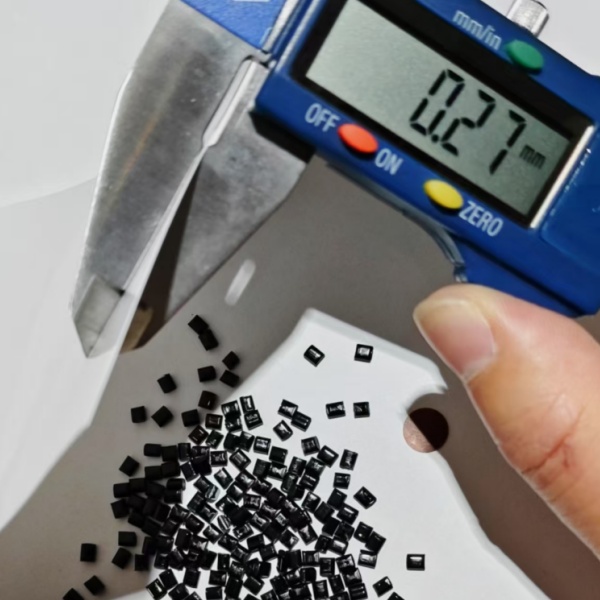FLIERMOUSE brand far-infrared transmissive plastic (LWIR-Transmissive Polymer) is a specialized plastic material engineered to allow efficient penetration of far-infrared rays in the 7-14µm or 2-14µm wavelength range. This band closely matches human body thermal radiation (peaking at approximately 9-10 microns), making it an ideal choice for applications in human motion sensing and pyroelectric detection. Below is an analysis of its material properties, application principles, and advantages:

1. Material Properties and Working Principles
- Wavelength Selectivity: Optimizes transmittance in the 7-14µm or 2-14µm band through polymer structure design (e.g., polytetrafluoroethylene , polyolefins or doping modifications (e.g., fluoride additives), while blocking visible light and other interfering wavelengths.
- Low Absorption/Scattering: Minimizes energy loss caused by lattice vibrations and molecular bond resonance, ensuring minimal attenuation of infrared signals during transmission.
- Environmental Stability: Features weather resistance, UV resistance, and mechanical strength to meet industrial requirements. Certain variants incorporate surface coatings to enhance wear resistance.
2. Core Applications
Human Motion Sensing (PIR Sensors)
- Principle: Human-emitted 9-10µm infrared radiation penetrates the plastic lens and is captured by a pyroelectric element, triggering charge variations to detect motion.
- Design Focus: Fresnel lens structures focus wide-area infrared signals, improving detection sensitivity and coverage.
- Examples: Intrusion alarms in security systems, automatic lighting/air conditioning control in smart homes.
Pyroelectric Detection
- Non-Contact Temperature Measurement: Used as infrared thermometer windows, where plastic filters isolate non-target bands (e.g., CO₂ absorption peak at 4.26µm) to ensure accurate reception of 7-14µm signals.
- Industrial Monitoring: Protective housings for high-temperature equipment thermal imaging, combining infrared transmission with physical protection.
3. Advantages Over Traditional Materials
- Cost and Processing: Compared to high-cost crystalline materials like germanium or zinc selenide, plastics enable mass production via injection molding, reducing costs by over 90%.
- Lightweight and Flexibility: Suitable for wearable devices or curved sensor designs, such as smartwatch-based body temperature monitoring modules.
- Customization: Material formulations can be adjusted to extend to other infrared bands (e.g., 3-5µm mid-infrared), adapting to diverse detection needs.
4. Technical Challenges and Developments
- Transmittance Limits: FLIERMOUSE’s best far-infrared transmissive plastics currently achieve 70-85% transmittance in the 7-14µm or 2-14µm band, still lower than crystalline materials (>90%). Further optimization of material purity and structure is required.
- Environmental Tolerance: Performance degradation in high-temperature/humidity environments is being addressed via nanocomposites or hydrophobic coatings.
- Emerging Applications: Expansion into medical fields (e.g., infrared therapy device covers) and agriculture (e.g., crop thermal stress monitoring).
Summary
FLIERMOUSE brand far-infrared transmissive plastic( LWIR-Transmissive Polymer) combines material science and optical design to address core requirements in human motion sensing and pyroelectric detection. Its low cost and ease of processing have pushed the civilian adoption of infrared technologies. With advancements in material modification, it is poised to replace traditional high-cost materials in broader infrared sensing applications.
Services
发表回复